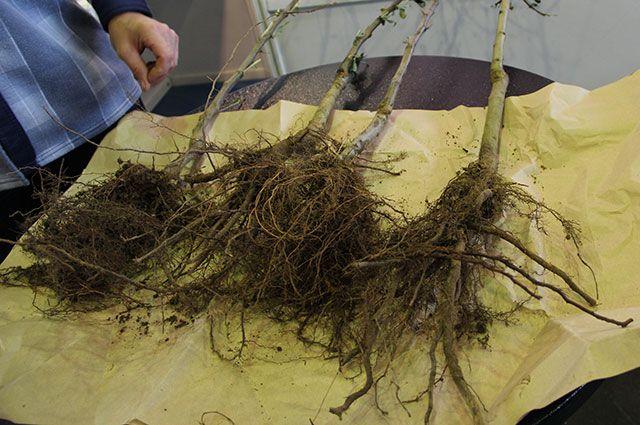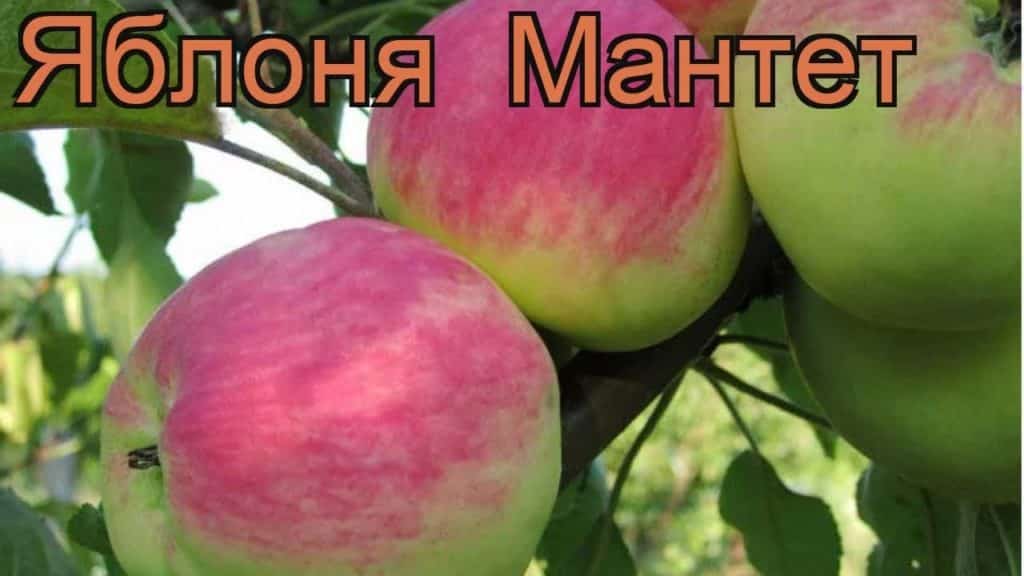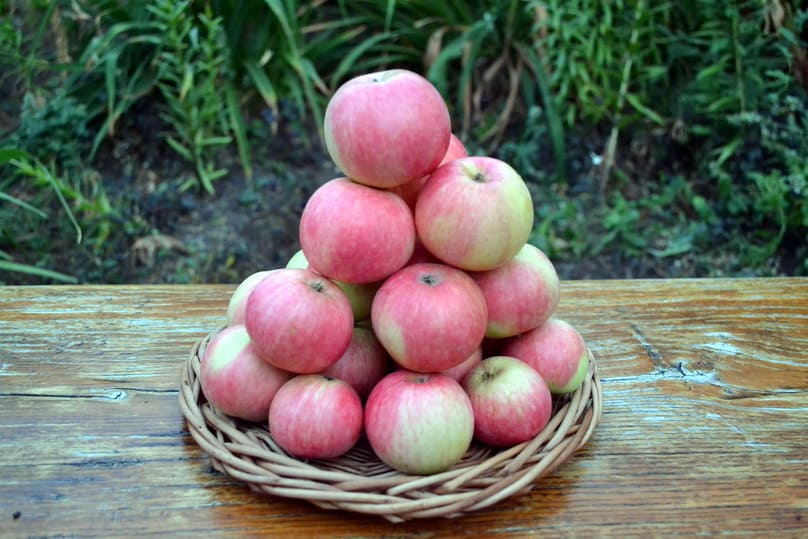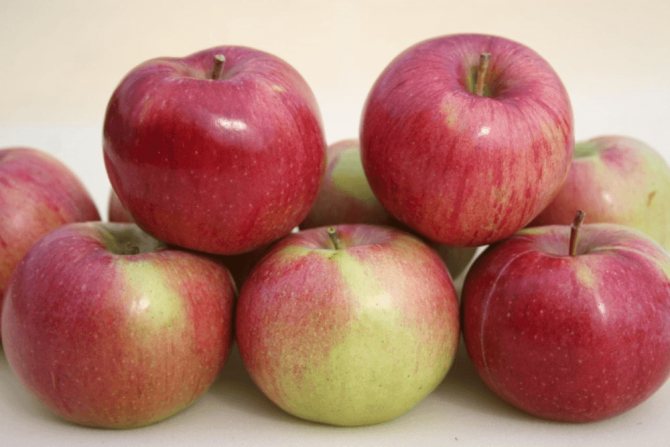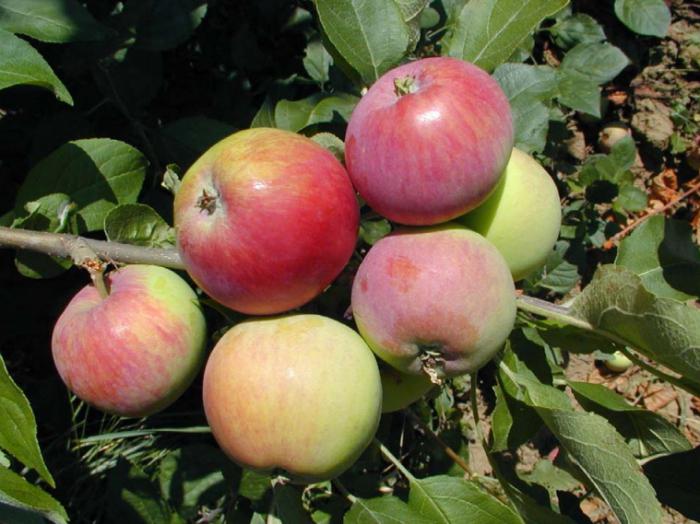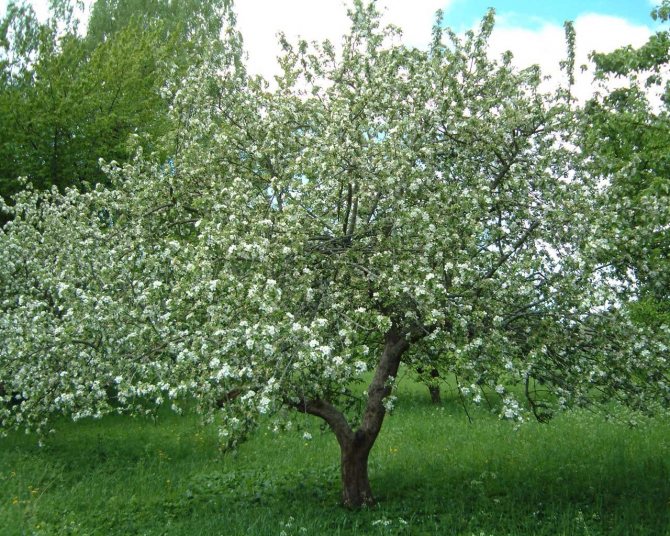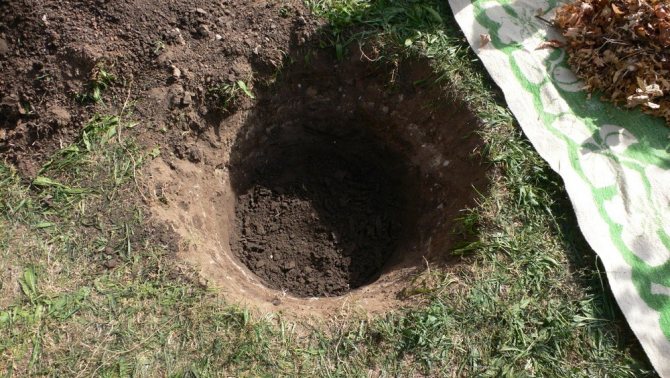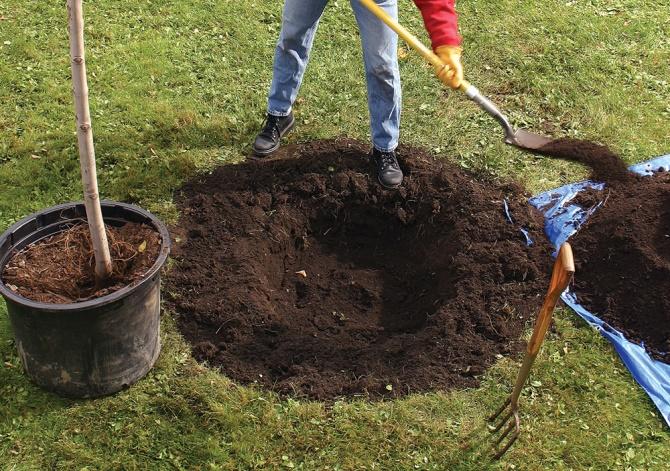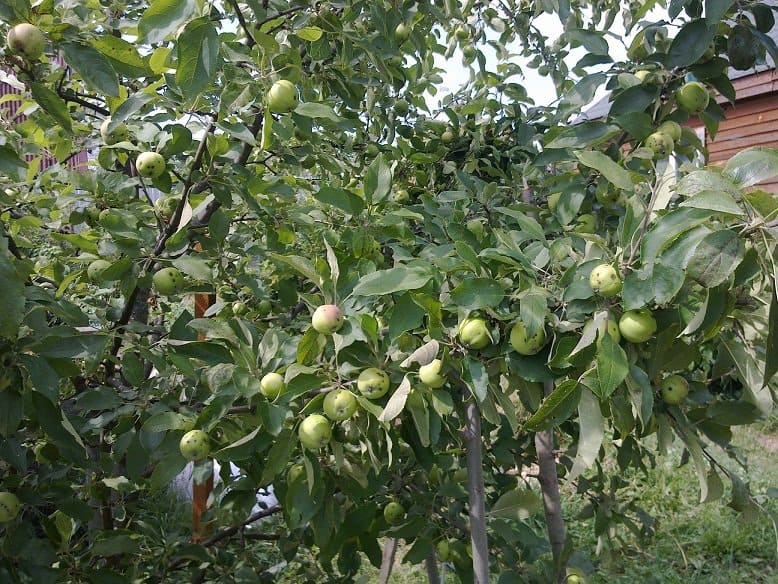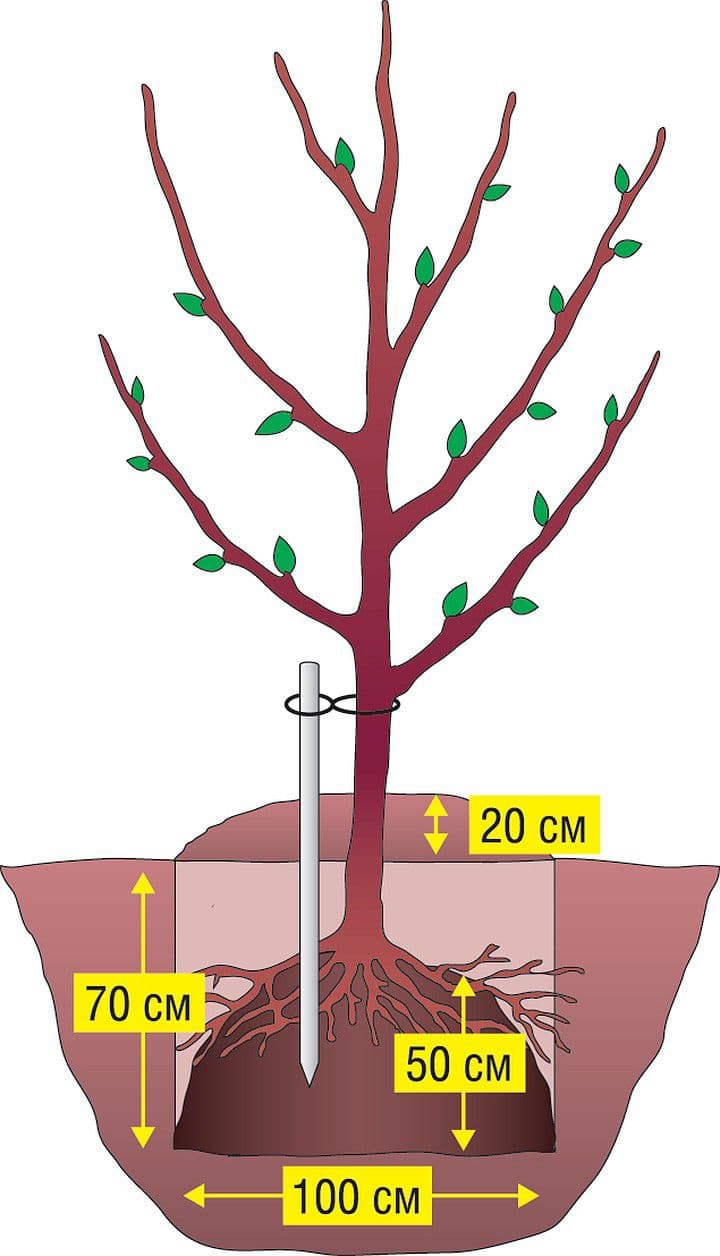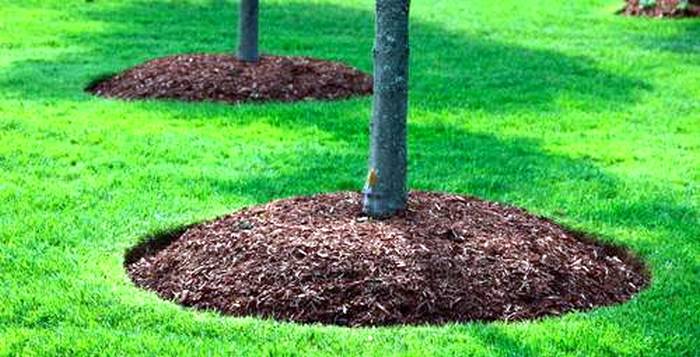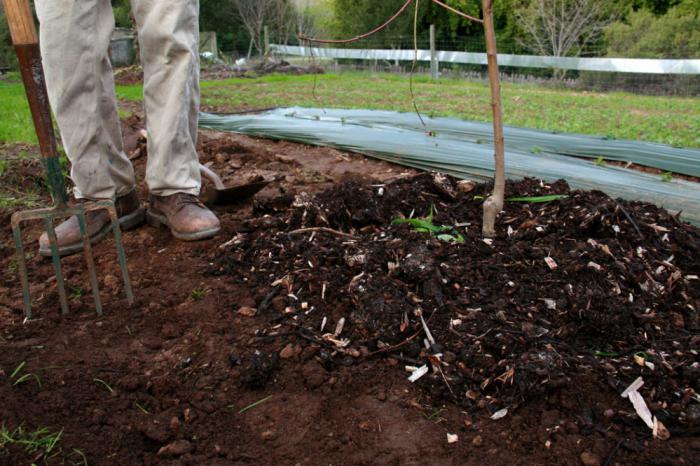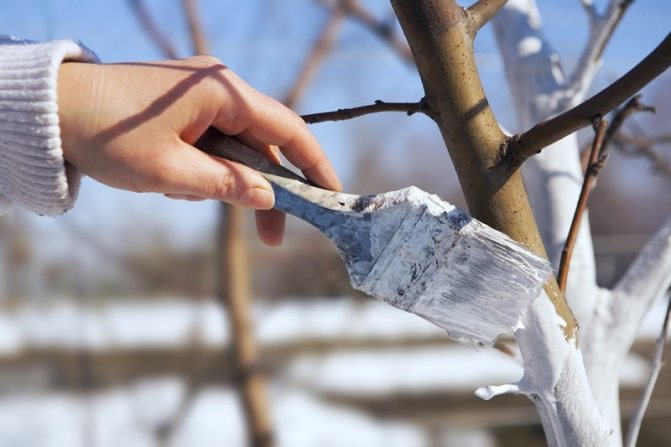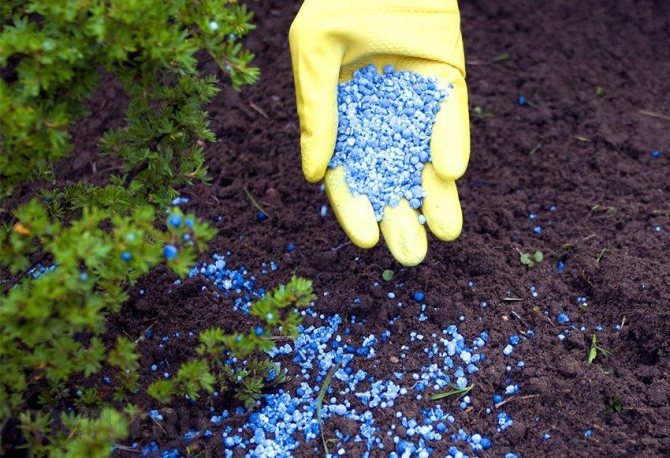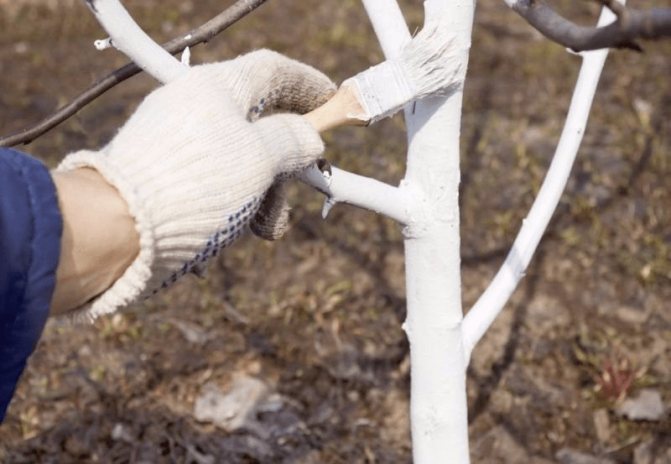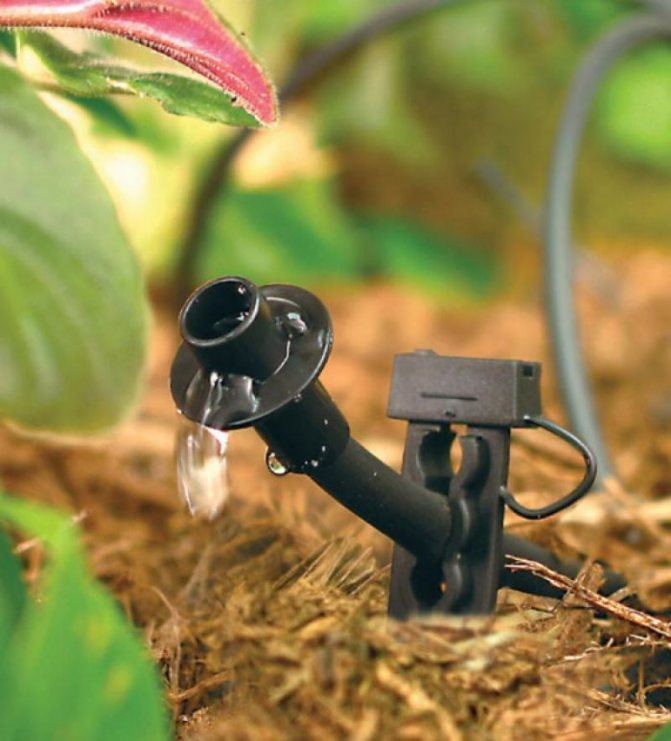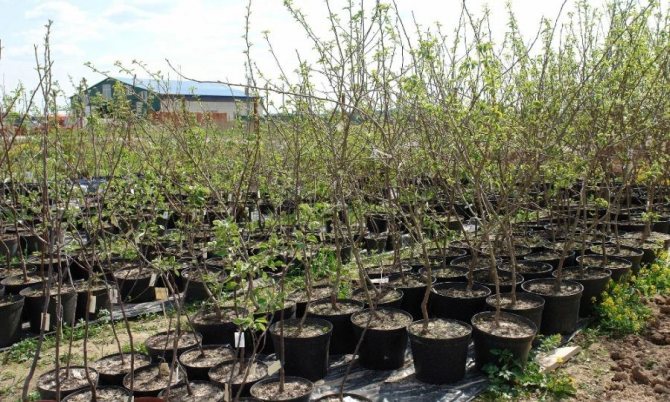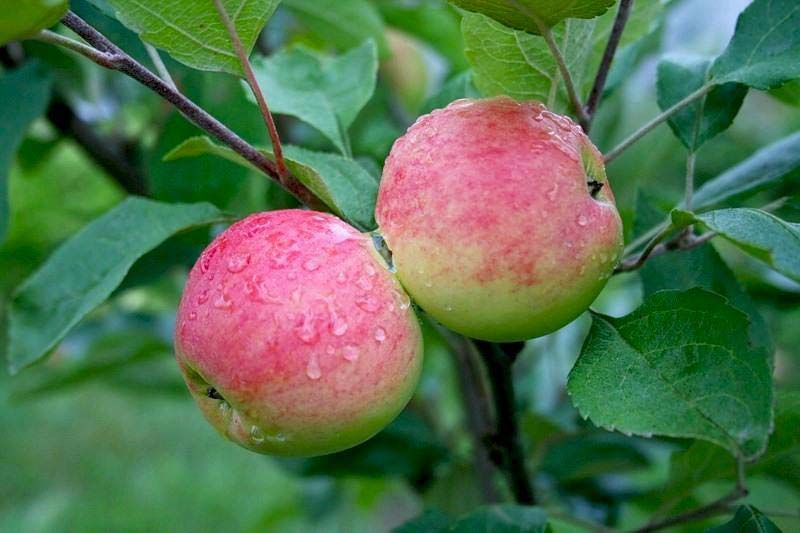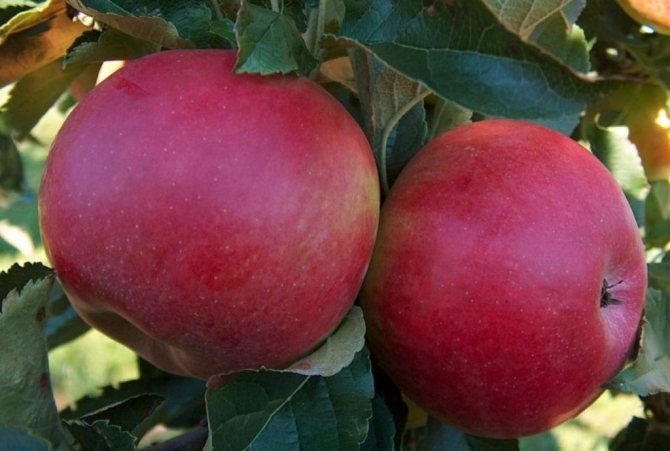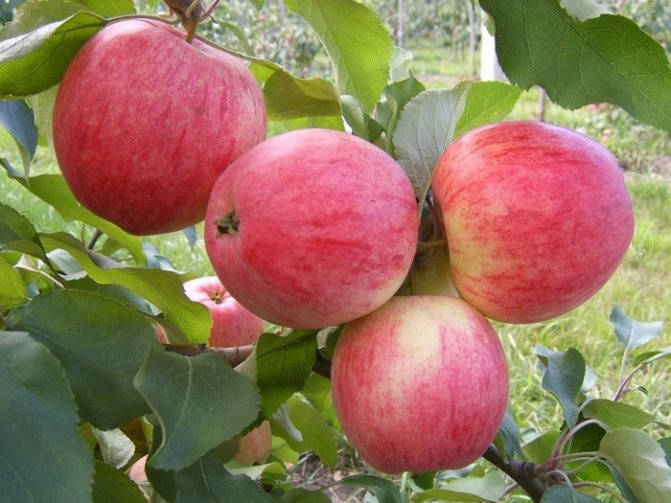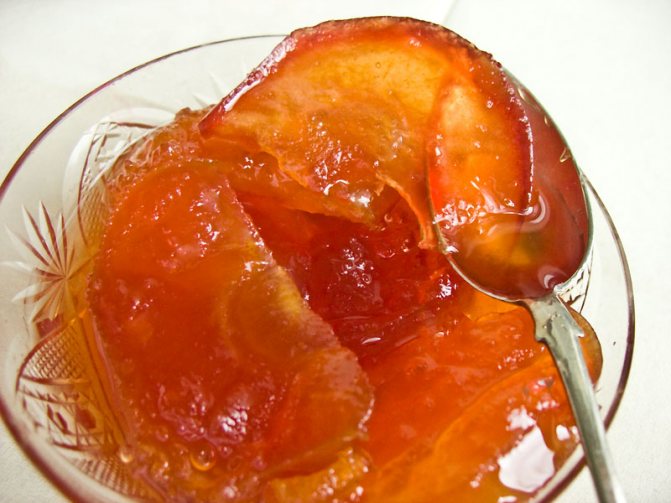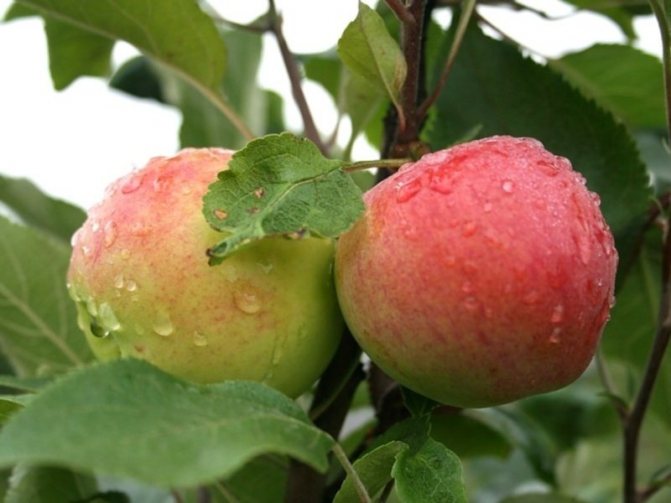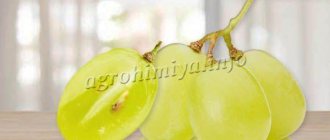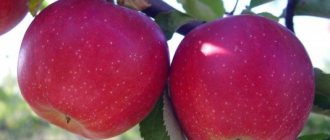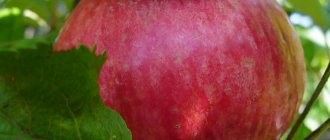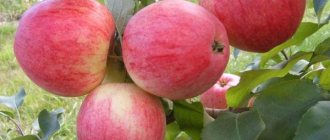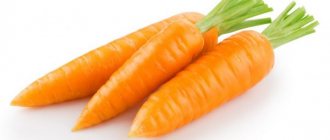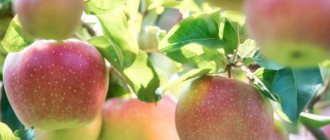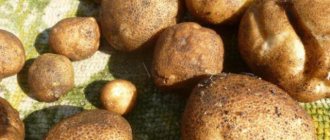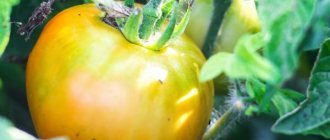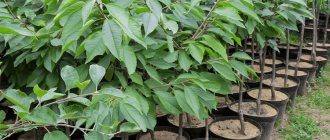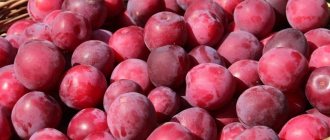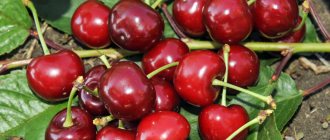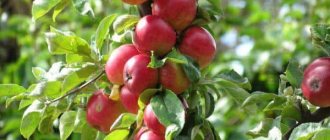Many apple trees ripen during the summer season, one of these popular varieties is Mantet. This culture is grown in almost every backyard, not only for their own use, but also for industrial needs. To achieve good results, it is important to take a closer look at the tree care rules that have helped me significantly increase my yield.
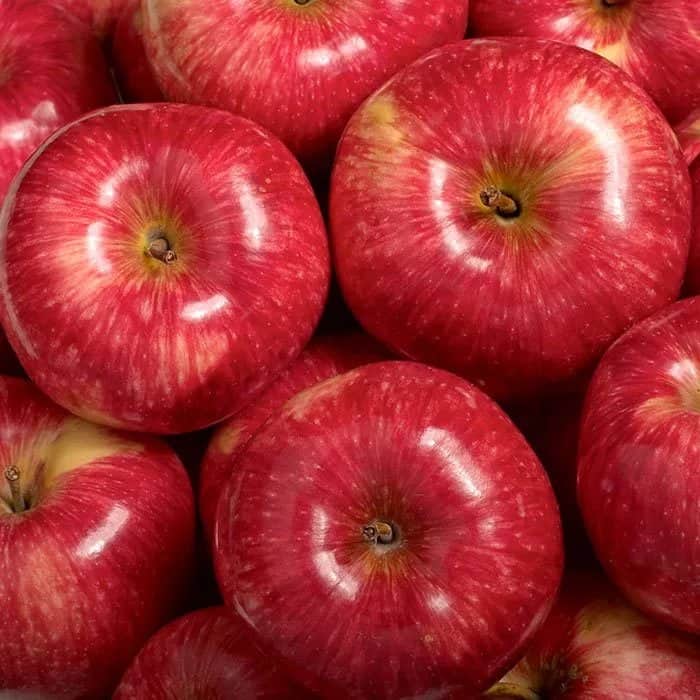
Characteristic
Tree height
Average, 4-4.5 meters... This variety is not very vigorous, which is an advantage for small plots.
Crown
- Oval shape,
- Quite rare
- With strong, upwardly directed skeletal branches.
Leaves
- Large,
- Leathery, shiny,
- Serrated edges.
Bloom
Flowers:
- Pale pink with a lilac tint,
- Fragrant,
- Very large.
Fruit
- Medium size, 120-160 gr.,
- Rounded-oblong shape with slight ribbing at the base,
- Yellow-green color with bright red speckled blush.
- Dessert taste, sweet with a slight sourness.
- The pulp is juicy, white, tender, with a pleasant aroma.
Mantet is considered the most delicious early-ripening apple..
Tasting assessment
4.4-4.6 points.
Harvest ripening time
The end of July, but with a cloudy, cool summer, it can shift to mid-August.
Yield
Above average with good care reaches 150-170 kg per tree... Without special care, the yield drops to 80-100 kg.
Yield Peak begins at the age of 15, lasts up to 30-40 years and gradually decreases.
Winter hardiness
Average, no more - 25 °. Variety not recommended for cultivation in the Northern regions.
Disease resistance
Medium, scab resistance - low. The apple tree is sick with this fungal disease when the weather is favorable for scab: during a wet, rainy summer or autumn.
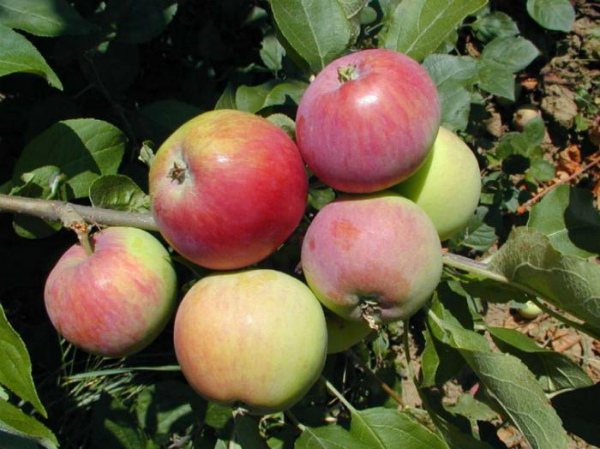

Ripening of the Mantet apple tree.
The history of the creation of the variety
Most often, an apple tree is a small tree with a spreading crown. It contains generative and vegetative shoots at the same time. The leaves, depending on the variety, can be different in size and shape, but they are always arranged alternately on the branches. Flowers, white with a pink tint, are pollinated by bees and some other insects.
The fruits of all varieties are different in appearance, taste, aroma and size.
Wild apple trees can often be found in the forest. Cultural varieties are grown in the gardens. In Russia, this fruit tree is more popular than in other countries. The apple tree is not demanding on the quality of the soil and grows on almost any land.
The Mantet hybrid was bred back in 1928 by natural pollination of Grushevka Moscow. This was done by Canadian breeders at the experimental station in Morden. In the state register, the variety is recorded as zoned for cultivation in the Central and Middle Volga regions. Such properties of the progenitor as winter hardiness and tallness were lost, but the Mantet apple tree began to give larger and sweeter fruits.
Apple tree Mantet
Testimonials
Elena T., Chelyabinsk. ‟I love this variety for its early apples. They are similar to Grushovka, only tastier, more aromatic. I planted this tree 20 years ago, after reading the description, photos, reviews. Now we take a good harvest from it, buckets of 15... I put some in the refrigerator, so they are stored for 3 weeks, and from the rest I make juice for the winter. 2 liters of juice comes out of a bucket of apples. "
Irina Vladimirovna S, St. Petersburg... ‟Mantet bears fruit every year... And almost every year it is affected by scab. But it is humid in St. Petersburg. I used to treat the scab, and it disappeared. Then I got tired and I didn’t splash anything for 4 years. And still the harvest is normal. I like that ripening is stretched out for 2-3 weeks, that is, not at once the entire crop must be removed. Where to put so many of them at once? We eat apples from late July to mid-August. ”
Egor, 32 years old, Pskov ‟I planted a Manteta seedling 5 years ago after seeing the photo and description of the variety. The first "harvest" - an apple with a children's cam, we tried 2 years after planting... Now the tree is already 3 meters in height, it grows well, unpretentious. I process the scab 2 times a season: after flowering, when the fruits are set and after harvest. The apples are sweet, slightly sour, I like it. "
Landing
So that the apple tree grows well and pleases with the harvest, you need to plant and care for it correctly.
During the season the apple tree needs watering (if there is no rain for a long time), removal of weeds in the trunk circle, pruning and fertilization.
To plant a tree, you need to choose a dry place, protected from strong winds.
Unacceptable close standing of groundwater (closer than 2.5 meters).
Important! If the area has high groundwater, it is better to plant apple trees on a semi-dwarf, and preferably a dwarf scion. Their root does not go deep into the ground.
The apple tree grows well in fertile, breathable soils. Good in structure loams, chernozems and podzolic chernozems are suitable.
What conditions does the apple tree require
In order for the Mantet apple tree to grow healthy and bring a bountiful high-quality harvest, you need to comply with certain requirements for the planting area, soil composition, lighting and temperature conditions.
Temperature and humidity
The Mantet apple tree can grow at an average annual air temperature of +7.5 to +11 degrees, and during the growing season - from +13 to +18 ° C. The optimum soil moisture level is 70-75% of the field moisture capacity. Deficiency of moisture in the soil inhibits the growth of shoots, and also negatively affects the formation of leaves and fruits.
Suitable location and lighting
The place for the Mantet apple tree seedlings should be well lit by the sun, and also protected from cold air stagnation and drafts.
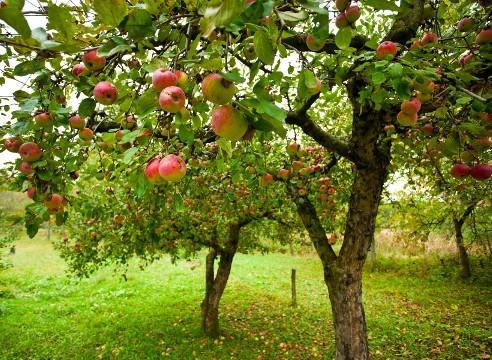

Soil composition
This apple variety prefers loamy soils. If the soil contains too much clay, river sand must be added. The optimal composition of fertile soil for the Mantet apple tree includes garden soil, peat, compost and humus.
Care
Top dressing
When planting in spring, the following is introduced into the planting pit:
- 1-2 buckets of humus or compost;
- 50-80 gr. potash fertilizers;
- 100-200 gr. superphosphate;
- 50-70 gr. nitrogenous fertilizers (urea, ammonium nitrate, ammonium sulfate).
When planting in autumn, humus and nitrogenous fertilizing are not applied, only potash and phosphorus fertilizers are added.
According to the same scheme, the apple tree is always fed:
- In the spring - nitrogenous fertilizers,
- In autumn - potassium-phosphorus.
Pruning
Performed in early spring before bud break or in the fall after the first frost.
When landing the branches of the apple tree are cut by a third of the length.
Yearly remove branches growing down, crooked and thickening the crown.
For one cut do not remove more than a quarter of the branches so that the tree does not "hurt".
Watering
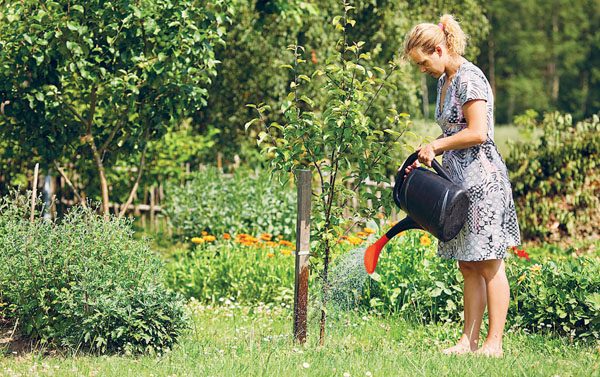

In summer, apple trees need to be watered abundantly.
Watering is especially needed young trees - in the first year after planting, they are watered once every 2 weeks if the weather is dry. For one watering, 2-3 buckets of water are consumed.
Mature tree watered 4-5 times per season, consuming 7-10 buckets of water.
Attention! A common mistake gardeners make is frequent but poor watering. With it, only the upper 10-15 cm of the soil is moistened and the roots of the tree lose the incentive to grow deeper in search of moisture.
Features of fruiting and ripening
Like most apple trees, the Mantet variety is self-fertile, i.e. to pollinate flowers, he needs a different type of treegrowing at a distance of up to 200 meters.
The best pollinators for the Mantet apple tree are considered varieties:
- White filling;
- Moscow Grushovka;
- Melba;
- Orlinka;
- Strefling.
These apple trees bloom at the same time as Mantet - in the middle of May.
The variety enters fruiting early:
- The first fruits appear 2-3 years after planting.
- The tree is rapidly increasing its yield,
- Keeps it for 10-15 years.
- Gradually, the yield decreases, there is a periodicity - after a fertile year, the next year the apple tree "rests".
The more fruits on the tree, the smaller they grow..
The Mantet variety is famous for its early maturity: apples ripen earlier than most others - at the end of July in the southern regions and closer to the beginning of August in the central ones. The crop ripens unevenly, the harvest time is stretched for 2-3 weeks.
Advice! The collected fruits are stored for no more than 2-3 weeks. Due to their thin and delicate skin, they are easily damaged during transportation.
Advantages and disadvantages
The advantages and disadvantages include:
- The dense, neat crown of Mantet does not require close attention.
- The plant is not whimsical in the choice of neighborhoods; flowers and vegetables can be planted next to it.
- Apple trees of other varieties, with which Mantet has the same flowering period, only improve the yield of the self-fertile variety.
- The fruits are delicious.
- After 10-11 fertile seasons, the apple tree will delight with a rich harvest in a year.
- The presence of pollinating apple trees and favorable weather conditions greatly affect the quality of the crop.
- Non-simultaneous ripening of fruits.
- Young, fragile branches of an apple tree break under the weight of the fruit.
- The higher the yield, the smaller the fruit.
- Weak immunity to diseases and attractiveness to pests.
- Low winter hardiness.
- In rainy seasons, the likelihood of scab damage increases.
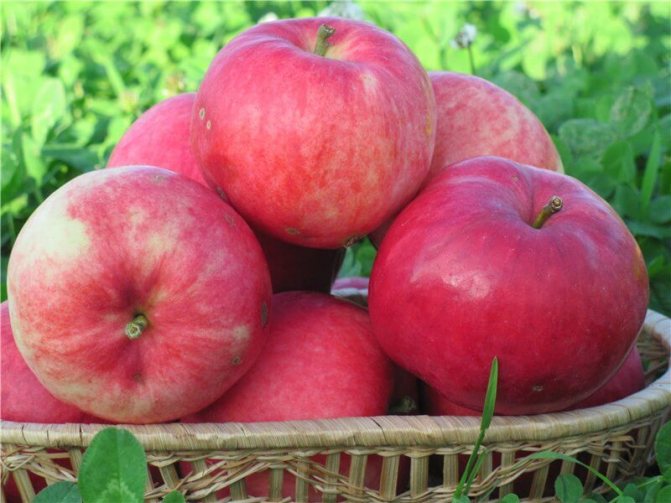

Varieties
The variety is successfully grown on vigorous, semi-dwarf and dwarf clonal rootstocks. Which one is better to choose and what is the difference between them:
- On a dwarf rootstock the tree will grow up to 2-3 meters in height, start bearing fruit 2-3 years after planting and live 25-30 years.
- On a semi-dwarf rootstock the apple tree will grow 3-4 meters in height, start bearing fruit 2-3 years after planting and live 30-40 years
- On a vigorous rootstock the tree will grow 5-6 meters high, give its first harvest 4-5 years after planting and live up to 60 years.
From a commercial point of view, it is more profitable to grow dwarf apple species: they begin to bear fruit faster and are easier to care for.
In addition instead of one vigorous apple tree, you can plant as many as four dwarf different varieties for a variety of tastes and ripening times.
Important! Due to the close location of the root system, undersized varieties need more frequent watering and an obligatory garter to the peg in the first 3-4 years of life.
If you want a very tall apple tree, like in the gardens of our grandmothers, choose the apple tree on a seed stock.
Its advantages:
- She grows over 7 meters in height,
- Unpretentious and resistant to adverse environmental factors,
- Fruiting for 40-50 years.
TO disadvantages of such apple trees include:
- Late entry into fruiting - 7-10 years after planting.
- Inconvenient care: pruning, harvesting, pest control.
- The quality of apples is lower than that of short and medium-sized species.
Columnar apple trees less hardy, their upper part of the trunk often freezes.
The tree begins to bush and the yield decreases. They should be preferred in warm regions with not cold winters or harbor for the winter with white covering material: lutrasil or spandbond.
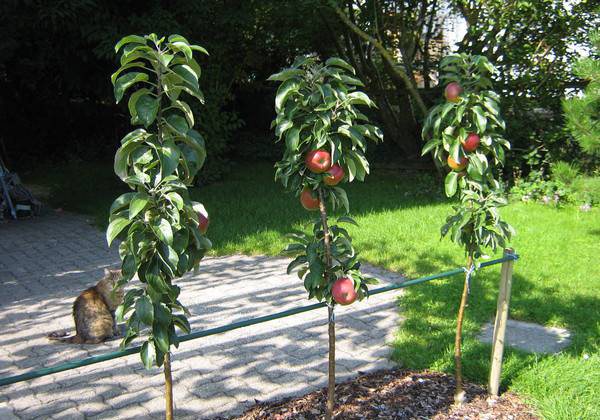

Columnar apple trees.
Dignity columnar type - the entry into fruiting in the second year after planting and the compactness of the crown.
Possible growing difficulties
Apple trees of the Mantet variety do not suffer from diseases and pests more often than others, but in bad weather and in the absence of proper care trees are often affected by scab, cytosporosis, aphids and spider mites, which can be eliminated using folk or chemical methods.
Of course, the use of special insecticidal or fungicidal preparations will be a more effective solution, therefore, at the first symptoms of scab, the plants are treated with Bordeaux mixture, Fitosporin or Horus, the preparation features of which are always noted on the package or in the instructions.
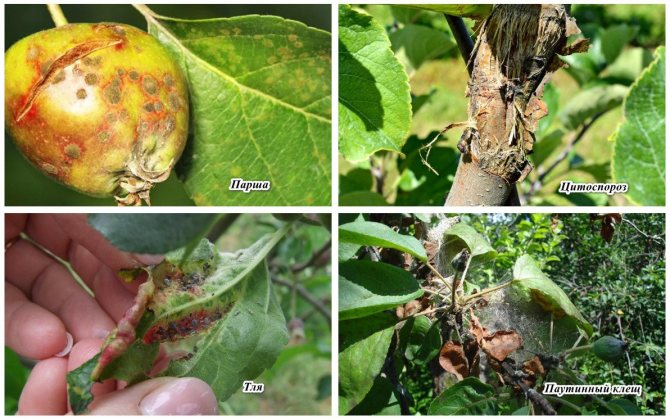

When plants are damaged by cytosporosis the most effective drugs are "Hom" or copper sulfate, but in the fight against aphids and mites, infusion of onion peels, drugs "Aktara" and "Aktellik" are often rescued.
For maximum protection of the plant from a sharp change in weather conditions and increase its resistance to various adverse environmental factors with the arrival of spring, you can spray the crown with "Zircon" or "Epin".
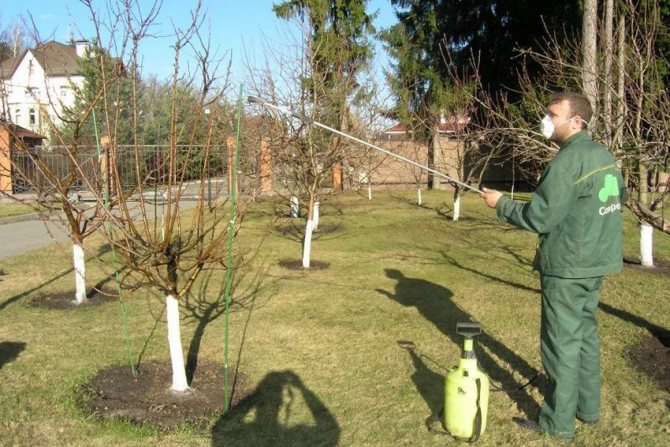

Is it suitable for the Moscow region?
The Mantet apple tree is included in the register of varieties, suitable for cultivation in the Central region of Russia, where the Moscow region belongs.
The Mantet apple tree does not differ in high winter hardiness and can freeze slightly in particularly harsh winters.
How to minimize the risk of freezing:
- Choose a seedling grown in a local nursery.
- For planting, choose a sunny place, avoiding lowlands and heavily blown areas.
- The first three years to cover the seedling is not winter.
What can and cannot be planted next to
The proximity of the Mantet apple tree with other fruit crops - pears, plums, cherries is considered to be safe. However, you need to maintain a distance of 2-5 meters between trees so that they do not oppress each other.
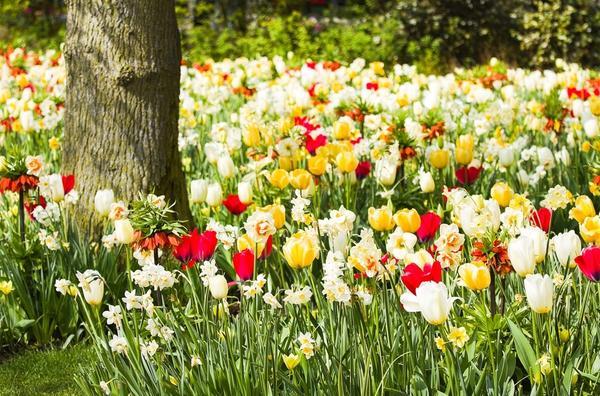

It is recommended to plant grass and flowers under the crown of the apple tree. This gives a well-groomed and attractive look, and also allows:
- improve the quality of the soil around the trunk;
- pull out excess salt from the soil;
- maintain optimal soil moisture;
- protect the root system from damage.
The following types are good choices:
- celandine, reliably protecting the apple tree from ants and aphids;
- white clover, which attracts bees for pollination;
- dandelion, the roots of which secrete ethylene - a substance that accelerates the ripening of fruits;
- lupine, which has a beneficial effect on the growth of the apple tree;
- nasturtium, which retains moisture and repels pests.
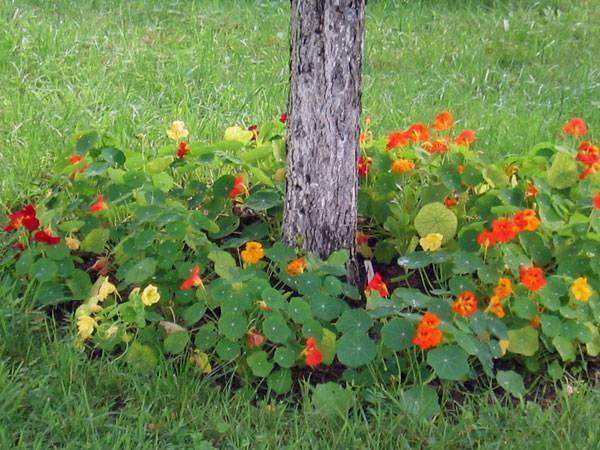

For the neighborhood with the Mantet apple tree, you should not choose such plant crops:
- hawthorn, as it attracts pests;
- nut, which has a depressing effect on fruit trees;
- raspberries, which, having a superficial root system, absorb moisture from the soil;
- currants, since in the shade of an apple tree its yield deteriorates;
- bird cherry, attracting glass and other pests to the garden;
- mountain ash, prone to attacks of mountain ash moth, which is dangerous for apple fruits.
Useful Tips
- To find out at what depth to plant a seedling, look at the grafting site: it should be 5-7 cm higher than the soil level.
- In the year of the first flowering of the apple tree, it is better to leave 1-3 flowers on it, and cut off the rest. The strength of a young tree is not enough for the growth of shoots and for fruiting at the same time.
- If the soil on the site is heavy, oily, dig a large planting hole: 70-80 cm deep and 60-80 cm wide. Add 3-4 buckets of sand to the soil taken out of the hole, and fill the hole with the prepared mixture when planting. The sand will loosen the soil and the seedling will grow easier.
Planting an apple tree in open ground
Before planting a seedling, you need to take into account the timing and properly prepare the soil.
Timing
A good time for planting the Mantet apple tree in open ground is mid-April, as well as the end of September - early October. An important condition is the absence of heat and scorching sun.
See also
Description and characteristics of the Macintosh apple tree, planting and care
To read
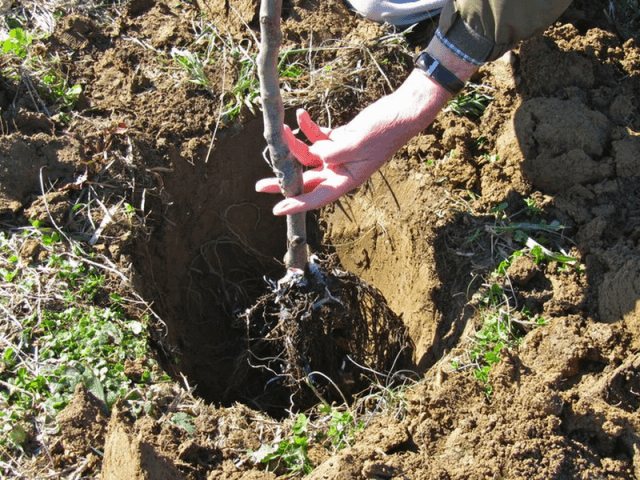

Site preparation and planting pit
The site must be protected from gusts of wind and have natural sunlight. Planting holes should be prepared in advance - two weeks before disembarkation. The width and depth of each of them should be one meter. To fill the holes, a mixture is used, consisting of garden soil, wood ash and humus with the addition of superphosphate and potassium sulfate. The layer of this nutrient is 20-30 centimeters. After laying the soil, the planting hole must be filled with ten liters of water.
Disembarkation
The planting process requires the following actions:
- Drive a wooden peg into the center of the filled planting hole, which will act as a support for the seedling. It should rise half a meter above the ground.
- Spread out the roots of the seedling.
- Place it in the center of the planting hole, carefully compacting the soil.
- From the north side, tie the seedling to the support. The distance should be 20 centimeters. The support must be maintained for three years.
- Water abundantly - this will require three buckets of water.
- Sprinkle the visible root collar with a layer of soil.
- Spread out a 5 cm layer of sawdust, dry grass and humus mulch.
- Re-water with three buckets of water a week after planting.
